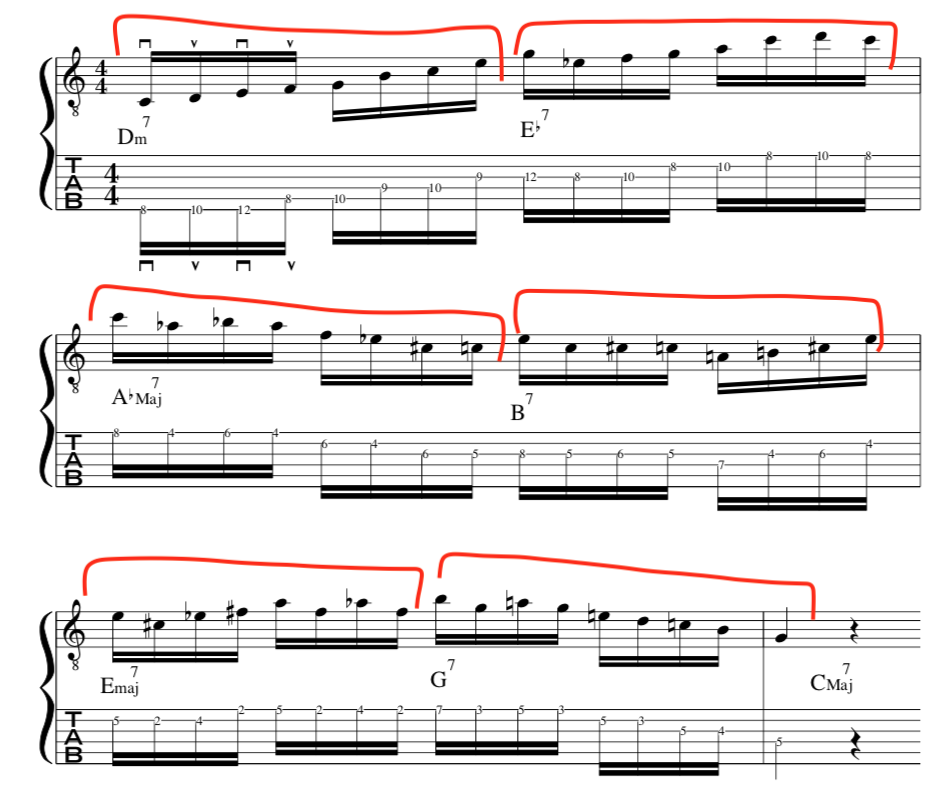
Please watch video above for detailed analysis
Hi Guys,
Many players ask, “How do I apply scales”?????
Many people get shred guitar mixed up with improvisational styles especially in regards to alternate picking.
Then, when improvisational chord changes appear the scalic structure, guitar fingering, rhythm and phrasing go out of the window. Because, the clumpy classical fingering impedes the rhythmic flow needed to weave in and out of rapid chord changes.
So what to do?
The key is to make simple fingerings with pentatonics, triad pairs, arpeggios, and chromatic passing notes and target tone set ups.
In the example for this blog/video we will go to the absolute basics and create a very simple scale. [please watch video above for more detail]
So, let’s look at the example of a simplified scale built from the basic major scale. [This could be seen as Phrygian but it is just exploiting a simple fingering]
This Ascends and Descends starting on a “Downstroke” with strict alternate picking.

For most players the most awkward part is descending on the last 2 strings the A and the E string.
Here is the same scale but with an even easier final 4 notes on the E and A strings:

Next we will apply this concept of breaking up scales and apply it to a bit of John Coltrane’s “Countdown”.
Notice the “Tetrachords” and 2 beat phrases through the rapid changes of harmony.

With the chords moving so quickly and the harmony changing in this manner you can easily hear, see and feel how important it is to be able to improvise with simple broken up scales that inevitably result in simple fluid fingering.
PDF: DOWNLOAD:
“Countdown” Example: PDF DOWNLOAD:
IF THIS LESSON WAS OF USE TO YOU THEN PLEASE SUBSCRIBE TO US BELOW ON YOUTUBE, THANKS!
